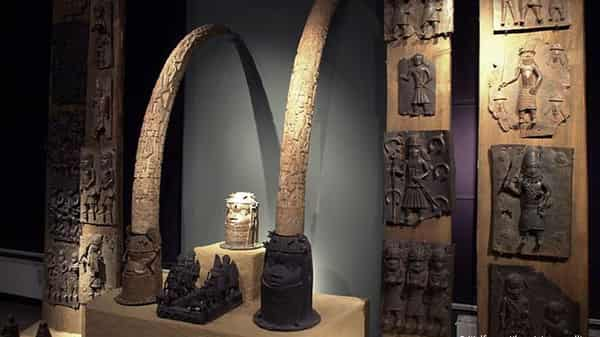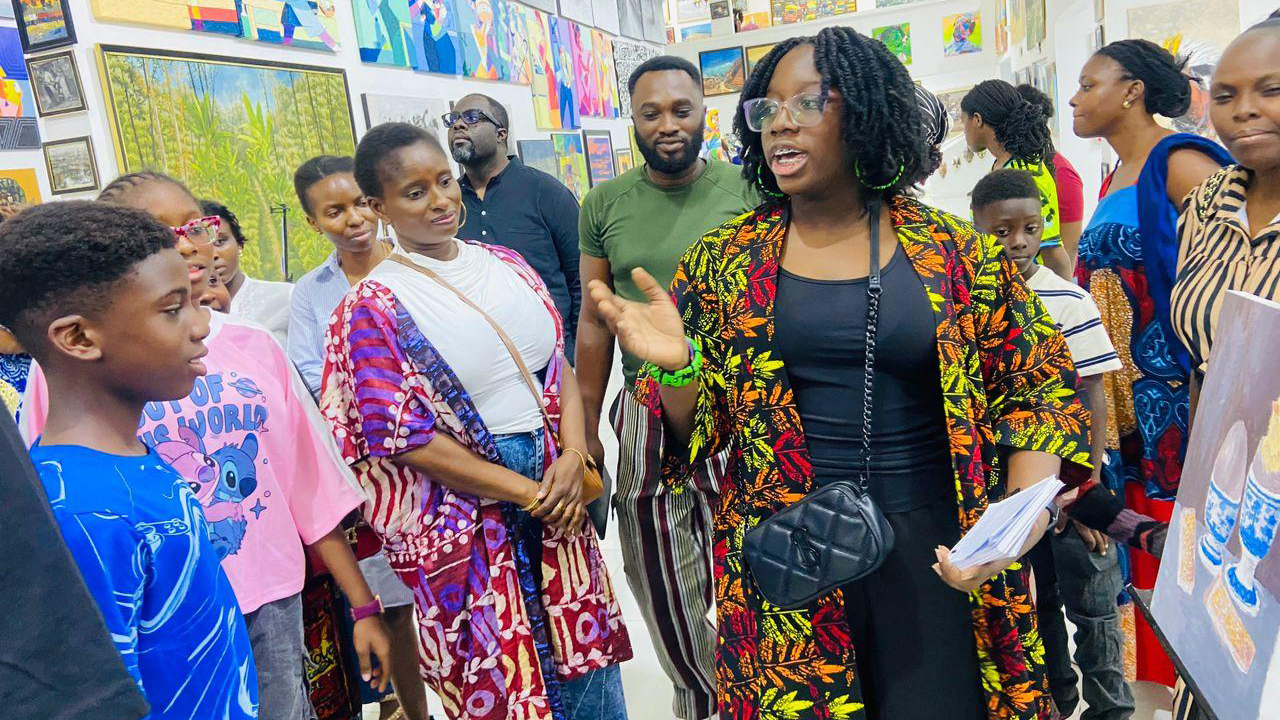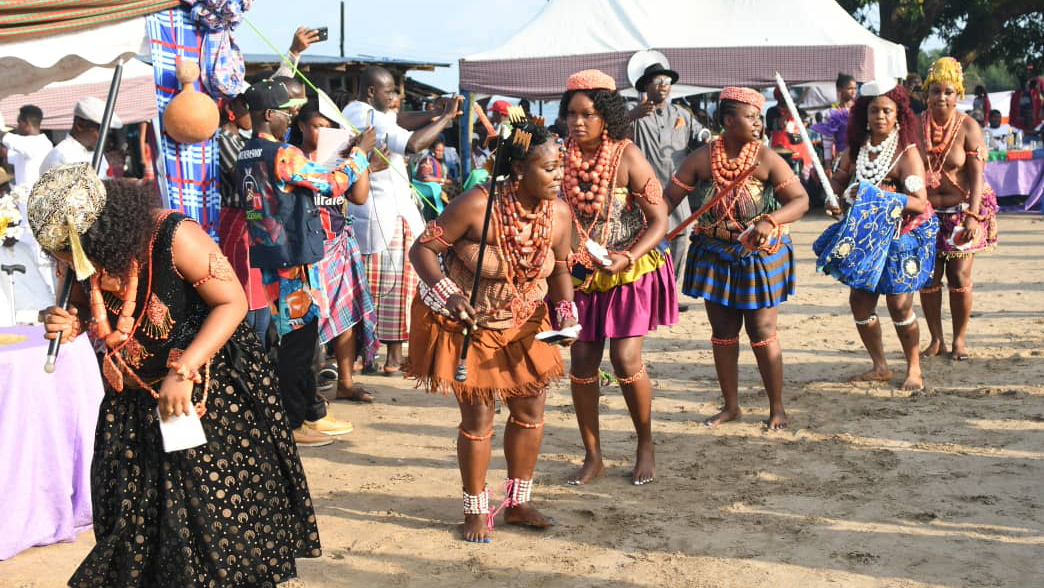
What has happened in 2021 is that countries with restitution issues adopted diplomatic strategies as weapons to get back their stolen art: Ethical considerations surmounted legal considerations. And countries forged new agendas.
These new ‘ethical’ models have shattered the inviolability of the ‘Colonial’ museum model and drive other nations to re-evaluate their restitution policies in 2022.
From Greece’s Elgin Marbles to Ethiopia’s Magdala treasures and other loots, Britain however, remained the only country that resisted the return, citing legislation that bans them from disposing of their collections.
As then-Prime Minister David Cameron said of Greece’s Elgin Marbles and India’s Koh-i-Noor diamond: “No, I certainly don’t believe in ‘returnism’, as it were. I don’t think that is sensible.”
According to British art historian, John Picton, who worked for both the British Museum and the state museum commission in Nigeria, the principal reason not to return the artworks is “the lack of facilities to house this material.”
Annabelle Steffes-Halmer, Culture Editor at Deutsche Welle, said, “the basic tenor at the time was that the pieces were better off in Europe, protected from environmental effects and decay. It was believed that Africa was incapable of protecting those pieces. It was an openly racist discourse that led to no result.”
For Zinsou, the London-based museum is mostly concerned about avoiding a precedent that might encourage other demands.“The British Museum refused to return the Benin artworks because [the British] fear that Greece would seize the opportunity to claim the Parthenon friezes,” she said. The Museum has nevertheless declared it was “engaged in a series of dialogues with different parties in Benin (…) and is aware of widespread hopes of future cooperation.”
Unfortunately, Great Britain’s appetite to engage with its colonial legacies has been mixed. It seems the shift in consciousness that played such a key role in re-defining policies elsewhere in Europe failed to move trustees in Britain’s national collections.
As many of these museums were established as archives of empire, their trustees have either been unwilling or have found it too difficult to disengage from these legacies. The British government’s strident view on retaining and respecting every aspect of Britain’s former empire hasn’t made their task any easier.
Outside the country’s national collections, the picture is very different and certainly more encouraging. Tangible steps have been taken to put right the wrongs of the past. The Museums Association received praise last November for introducing fresh guidance to support decolonising the nation’s museums, and several important repatriations, in particular Benin Bronzes, were made by collections outside London, reflecting new respect for fair and just solutions.
But the continued inertia of Britain’s national collections and their unwillingness to consider new policies for reparation and restitution is furthering their isolation from the global museum community and, in particular, from regional and university collections across the UK.
Observers of events in the restitution campaign have said failure to recognise this changing shift in consciousness threatens the very reputation of Britain’s national collections.
It’s too early to know whether the British Museum’s new chairman, George Osborne, will seek to implement or resist changes to national museum policies. This week, another chapter in the long-running Elgin Marbles saga attracted headlines when a provincial museum in Palermo, Sicily agreed to return a fragment of the Parthenon to Athens on the basis of a long-term loan. Some of the media became excited that a return of the Marbles is growing inevitable. But we are far from this conclusion. If the Museum’s trustees continue to refuse requests for repatriating items, such as Ethiopia’s Tabots, which they can legally dispose of under the terms of the British Museum Act, it doesn’t seem likely they’re about to agree on the return of the Elgin Marbles, which the same British Museum Act legally obliges them to retain.
Overall, global progress towards a new approach to restitution may have been mixed. But it’s clear the pandemic in 2021 failed to set the restitution lobby off course.
However, 2021 was the year when Germany set out resolutely on a path to tackle one of the highest-profile of all restitution issues – the return of the Benin Bronzes. So important are these Benin artefacts to German state collections that retaining some of them as long-term loans have become an important element in their negotiations with Nigerian authorities.
The return of a significant number of Benin artefacts from Germany now looks inevitable. The impact on their state collections will also be considerable.
The German restitution pledge, the largest thus far, has injected momentum into the push for other governments to do the same as nations worldwide grapple with histories of racial injustice. Protest movements have placed a fresh spotlight on old atrocities, toppled statues and called for the recovery of items stolen — often violently — during colonial rule.
Meanwhile, Belgium is already on the brink of passing legislation that paves the way for a bilateral agreement with the Democratic Republic of the Congo.
Each is now committed to placing justice and fairness at the core of their new legal models – at least for objects stolen or removed violently from their own former colonies. Wholesale restitution is still not on the table.
Each nation has proposed some form of new central mechanism or quasi-independent commission as a means of processing future requests for repatriation. The Belgian commission will determine which of the thousands of Congolese objects in Belgian state collections should be returned to the DRC. They’ve also suggested over time this brief will cover the cultural property from other former Belgian colonies, including Rwanda and Burundi.
Although the actual number of Benin objects returned to Nigeria last year was small, commitments to consider future returns leapt in number. Even those who report they’ve received no formal requests for repatriation (including Cambridge’s Museum of Archaeology & Anthropology and Oxford’s Pitt Rivers Museum) are now indicating they’re likely to make returns in the future.
Last year, several members of the Benin Dialogue Group, including the British Museum, pledged new partnership arrangements with Nigeria’s Legacy Restoration Trust to enable these conditions to be met. But there are still obstacles to overcome, in particular, over whether members of this Group are prepared to transfer ‘ownership’ of their Benin objects to Nigeria. The Benin royalty has been rejected outrightly, dealing with the Trust.
Benin bronzes can be found in 161 museums around the world, according to research by Dan Hicks, a curator at the Pitt Rivers Museum at the University of Oxford and the author of “The Brutish Museums.” Thirty-eight are in the United States. Only nine of the institutions are in Nigeria.
Many institutions remain hesitant to relinquish the work. Pressure has swelled over the last year, however, as protesters flooded cities, reinvigorating dialogue around painful memories. Atop the African Union’s agenda in 2011: fighting the coronavirus — and recovering stolen heritage.
REQUESTS for the restitution of cultural property are not a new issue in international law. Long before the government of modern Greece moved to recuperate the so-called Elgin marbles or Parthenon marbles, Lord Byron had criticised Lord Elgin for removing the collection of marble figures and a frieze from the Parthenon and offering them for sale to the British Parliament in 1816.
Nevertheless, the formal request by Greece in 1983 for the return of the marbles remains the best-known and most-discussed restitution paradigm in academic and political forums.
In it, the Greek delegation included in its statement to the UNESCO Intergovernmental Committee for the Return of Cultural Property to its Country of Origin that all countries have the right to recover the most significant parts of their cultural heritage lost during periods of colonial or foreign occupation.
Due to the emergence of myriad restitution cases starting in the early 2000s, the legal aspects of looting and recovery have attracted intense scholarly interest. And the international nature of the research, which has involved scholars from both North America and Europe, has led to many conferences, which in turn yielded a rich array of anthologies.
Kwame Opoku, cataloguing Africa’s demands for restitution, said they have, however, always existed. The Oba of Benin, Oba Akenzua II, for example, requested, in 1936, and got one regalia back, but this did not signal a change of attitude of the colonial masters.
Bernie Grant, a Labour Member of Parliament of Caribbean descent (Guyana, MP 1987-2000), made pleas on behalf of the Oba of Benin in the British Parliament but to no avail.
From 1960 to the present day, Opoku noted, African governments made demands for restitution but with no success.
In 1974, Ghana made claims for the Asante golden artefacts the British Army had stolen in 1874 when they invaded and burnt Kumasi, the Asante capital.
The United Nations and UNESCO, on its part, have since 1972 been issuing every second year a Resolution on the Return or Restitution of Cultural Property to the Countries of Origin, which urges the former colonial States to return to their former colonies artefacts they took away during the colonial period.
The Western states have regularly ignored the injunction of the world body and continued their illegal possession of the cultural artefacts of their former colonies. This outlaw behaviour of Western states does not seem to bother them.
In 1977, Nigeria requested from Britain the famous ivory hip-mask of Queen-mother, Idia, from the British Museum for the pan-African festival (FESTAC 77).
After asking for 2 million pounds, Britain declined to lend the mask to Nigeria.
The argument advanced by Britain, such as the climatic difference between the British Museum and Nigeria, infuriated all Africans.
Ethiopia has constantly requested the restitution of the Maqdala treasures looted by the British army in their notorious invasion of Maqdala in 1868.
Britain has also not yet accepted Egypt’s s claim to the Rosetta Stone, while Germany has not admitted restituting Nefertiti’s bust to Egypt. The bust was brought to Germany in 1913 by Ludwig Borchardt but only displayed in 1923 and now in the Neues Museum, Berlin.
Again, in March 2000, the late Oba of Benin, Oba Erediauwa, sent his brother, Prince Edun Akenzua, to submit a plea to the British Parliament to return the thousands Benin bronzes the British Army had looted in the notorious 1897 punitive invasion of Benin. The petition has become known in history as Appendix 21 and is in the official records of the British Parliament, Hansard Reports. Nothing came out of the Benin plea.
From 2000 on, Africans made several demands for restitution. The Europeans never considered these various demands seriously or mostly denied they had ever been made or just kept silent.
In 2002, 18 major western museums, excluding the British Museums, issued the discredited Declaration on the Importance and Value of the Universal Museums. By this declaration, they sought to disarm those with claims to restitution, especially Greece with its claims to the Parthenon Marbles.
Philippe de Montebello, then director of the Metropolitan Museum of Fine Arts, New York, Neal MacGregor, then Director of the British Museum, London, and James Cuno, then Director of the Art Institute of Chicago, are what Opoku, a foremost restitution activist, declared as the ‘high priests of the universalists’. Through their actions and writings, they defended the right of the Western museums to hold onto looted African artifacts.
In 2007 the Ethnology Museum, now World Museum, Vienna, organised a magnificent exhibition, Benin Kings and Rituals, Court Arts from Nigeria, which traveled later to Paris, Berlin, and Chicago. A symposium organised in connection with the exhibition discussed the question of restitution. The Benin Royal delegation stated that it would be satisfied if each museum present were to return one Benin artefact. That request was rejected by the Western museums that did not seem to recognise this historical opportunity to solve the issue of the Benin artefacts.
By then, restitution had become a topic no one could easily ignore, and a lot of publications had been produced on the topic, which had also been adopted, by mass media and the popular press everywhere. Museums and governments had also got used to it and were not unnecessarily worried by it; they could not ignore restitution.
On this background, came the famous declaration of Macron on November 28, 2017, before a large crowd of students at Ouagadougou University that:
The World Museum, Vienna holds 37,000 (200 from Benin) but so far, we do not know whether Austria is going to restitute looted African artefacts or not as there has been no definitive statement on the issue by Austrian authorities. The Minister for Foreign Affairs is said to be in the process of developing a new Africa strategy for Africa and a motion for a resolution proposed by the NEOS party would request the Foreign Minister to include restitution of African artefacts of problematic or unexplained provenance.
The Belgians, who kept quiet for a long time, have finally decided to restitute to the Democratic Republic of Congo artefacts that had been looted under the colonial regime.
During a visit to the Democratic Republic, State Secretary for Scientific Policy, Recovery Program and Strategic Investments, Thomas Dermine, reaffirmed the determination of Belgium to restitute looted Congolese artefacts:
“The objects illegally acquired by our ancestors do not belong to us. They belong to the Congolese people. Full stop. We must adopt a position from a Congolese perspective: to reconstitute the cultural identity of a people, a perspective that has been deprived for too long of the memory, creativity, and spirituality of its ancestors.”
The British Museum holds more than nine hundred Benin bronzes and other precious African artefacts, such as Asante gold and Ethiopian gold, silver, and manuscripts, but refuses to return any artefact and is willing to consider loans to the owners.
According to Opoku, “These returns of artefacts to Africa are all very well. But we should be vigilant and avoid any complacency. We are far from receiving the restitution of artefacts we demanded. Take, for example, the request by the Republic of Benin. Benin requested 2016 the restitution of 5000 artefacts looted by the French in 1892 and received on 10 November 26 precious treasures. At the rate of 26 objects per year, how long will it take to return 5000 items? 200 years? Patrice Talon, President of the Republic of Benin, made it clear to Emmanuel Macron after the Culture Ministers of France and Benin had signed an agreement transferring 26 objects that he was not satisfied with the number of items restituted.
“President Macron was aware of the inadequacy of 26 objects and blamed the French rule against inalienability. Still, he mentioned a proposal for general law, loi-cadre, which would facilitate more restitution and dispense with the requirement for specific legislation anytime there is a need for restitution. The French Senate will discuss the draft law on 15 December 2021. France is returning twenty-eight (28) looted artefacts to Benin, Senegal, and Côte d’Ivoire. At the rate of twenty-eight (28) objects per year, how long will it take France to return the 90,000 looted African objects in France? Three thousand two hundred fourteen (3,214) years will be necessary.
“If we turn to the German promise to return in 1130 Benin bronzes to Nigeria, we realize that they are not returning all the looted Benin artefacts in Germany. The German Contact Point for Collections from Colonial Contexts Publishes an Inventory of Benin Bronzes in Museums in Germany lists 1163 Benin artefacts.”
He continued, “the Nigerians may have agreed to leave some Benin objects in Germany following their signing of a Memorandum of Understanding with Germany on 13 October 2021. Still, they are not showing anybody the text of the agreement. It is evident from the German government’s decision of April 29, 2021, not all German institutions that hold Benin artefacts agreed to the principles enunciated in the statement.”
Moreover, Germany’s decision to return Benin bronzes relates only to Benin artefacts. What about artefacts from Angola, Burundi, Cameroun, Ethiopia, Ghana, Rwanda, Tanzania, etc? These must also be restituted. The struggle for restitution of looted African artefacts is not limited to Benin artefacts, even though these are the best-known examples of flagrant European looting and illegal possession of African artefacts. Besides Benin bronzes, we still have Asante gold, Ethiopian gold, silver, and manuscripts in Western museums.
“We should resist attempts to appease us with token restitution, return of a few artefacts when the Western museums have been holding thousands of our artefacts for more than one hundred and thirty years – Musée du Quai Branly, France has 75,000, British Museum, 70,000, Africa Museum, Tervuren, Belgium 180,000. The racist arguments of the former colonial masters appear in their present statements even when they accept restitution in principle.”
In a milestone achievement, the UN General Assembly adopted by consensus the resolution entitled “Return or restitution of cultural property to the countries of origin” at its 44th plenary meeting on December 6, 2021. The resolution was spearheaded by Greece and co-sponsored by 110 other member states.
2022 is looking positive for the campaign as the closing part of 2021, recognising that it affects all regions of the world, the resolution expressed deep concern about the continuing illicit trafficking in cultural property as well as the loss and vandalism of cultural property from archaeological and other sites, in particular in areas of armed conflict.
The resolution welcomes the report of the Secretary-General submitted in cooperation with the Director-General of UNESCO, while at the same time recalling all UNESCO’s seven cultural Conventions and other important international agreements related to the return and restitution of cultural property. It also recalls Security Council resolution 1483 (2003), in particular the paragraph relating to the restitution of the cultural property of Iraq, and Council resolution 2056 (2012) on the situation in Mali.
Be that as it may, so important are these Benin artefacts to German state collections that retaining some of them as long-term loans have become an important element in their negotiations with Nigerian authorities.
The legal undergirding for cultural diplomacy and the return of cultural property is embodied in the principles of international legal conventions.
The current significant international conventions that form the legal regime for the protection of moveable cultural property are the Hague Convention, the 1970 UNESCO Convention and its companion, the UNIDROIT Convention on the International Return of Stolen or Illegally Exported Cultural Objects.
Barbara T. Hoffman is a prominent New York-based art, intellectual-property and international-cultural-heritage lawyer, noted that action when confronted with globalisation?
In formulating responses, a cultural diplomat may find guidance in the set of ethical principles currently taking shape in international practices, which favor a return to the source nation of antiques and artifacts. These include principles such as access, benefit-sharing, non-exploitation of an economically weaker party, the preservation of the integrity of cultural context and cooperation among nations in the return of cultural objects to the country of origin.
Cultural diplomats and foreign policy professionals should try to resolve problems by amicable means and cooperative solutions, including mediation, which can also facilitate a continuing value-enhancing and collaborative relationship between the parties.
In such a way, the cultural diplomacy paradigm might reconfigure traditional notions of property not as the right to exclude, but as a web of social relationships where the title gives rise to an obligation consistent with the principle of fostering cultural dialogue.






